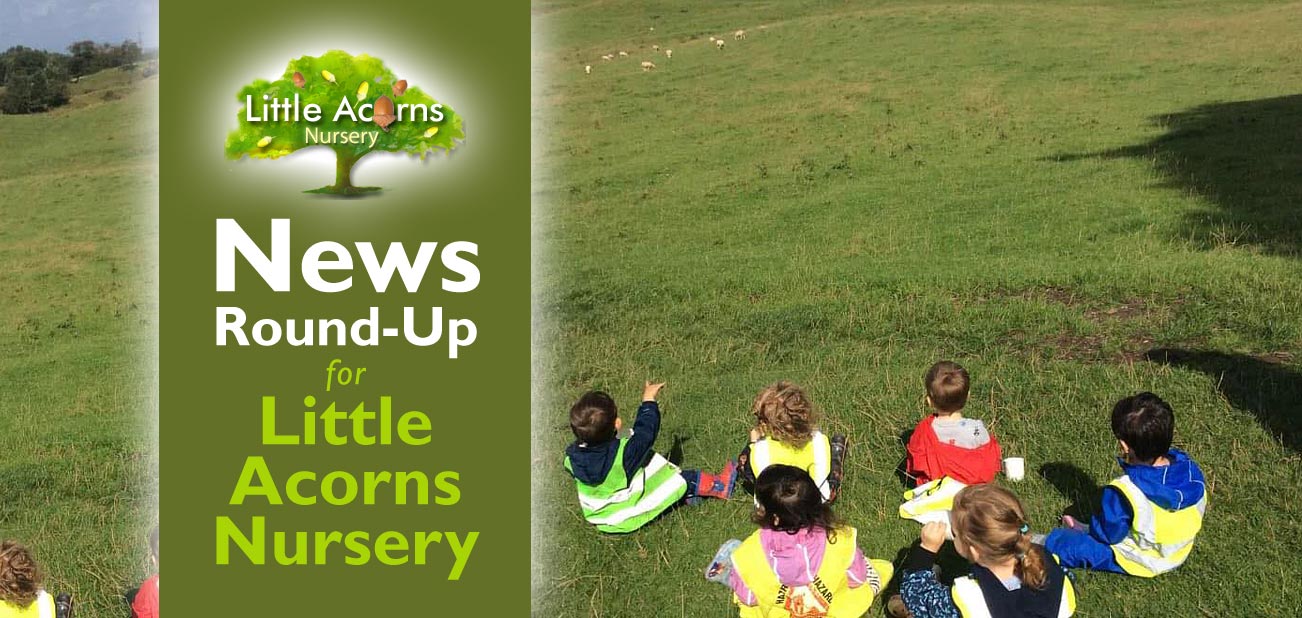
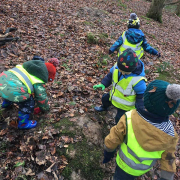 Having previously published guides and useful information here for parents, we thought it was time for a news round-up to highlight some of the wonderful activities that have been taking place with children at Little Acorns Nursery. Both children and staff have been extremely busy indeed, with exciting new initiatives, outings, special visits and extra-curricular activities. Let’s take a look at some of the most recent.
Having previously published guides and useful information here for parents, we thought it was time for a news round-up to highlight some of the wonderful activities that have been taking place with children at Little Acorns Nursery. Both children and staff have been extremely busy indeed, with exciting new initiatives, outings, special visits and extra-curricular activities. Let’s take a look at some of the most recent.
Forest School Sessions to Start the Year
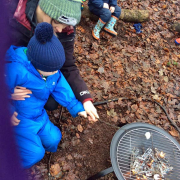 January began the new term with exciting Forest School sessions for our little ones. As well as trips to local countryside, woodland and natural open spaces, the pre-school children and ‘Rising 3s’ at Little Acorns learnt all about fire safety and its importance. (Take a look at the small photographs to see the various activities — click any for a larger view).
January began the new term with exciting Forest School sessions for our little ones. As well as trips to local countryside, woodland and natural open spaces, the pre-school children and ‘Rising 3s’ at Little Acorns learnt all about fire safety and its importance. (Take a look at the small photographs to see the various activities — click any for a larger view).
The children also enjoyed making some much-needed bird feeders for the local birds, many of whom struggle for food during the winter months. This coincided nicely with the RSPB’s Big Garden Birdwatch, which happens during the last week of January each year. During the annual event, both children and adults are asked to spend one hour outdoors to count up how many birds they see and which species they belong to. 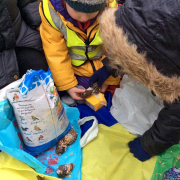 This is important for bird conservation, bearing in mind that the UK bird population has fallen by a staggering 38 million birds in only 50 years. Sadly, even some birds that may have been thought of as common are now in trouble — the starling, for example, is now on the RSPB’s ‘Red List’ — their list of birds whose populations have declined to worrying levels. Such birds need all the help they can get from us, so it’s good for children to be aware of the importance of conservation and caring for wild creatures.
This is important for bird conservation, bearing in mind that the UK bird population has fallen by a staggering 38 million birds in only 50 years. Sadly, even some birds that may have been thought of as common are now in trouble — the starling, for example, is now on the RSPB’s ‘Red List’ — their list of birds whose populations have declined to worrying levels. Such birds need all the help they can get from us, so it’s good for children to be aware of the importance of conservation and caring for wild creatures.
“Not all classrooms have four walls.”
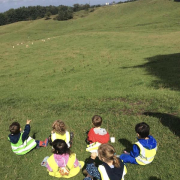 Forest School gives children access to the Great Outdoors so that they can learn all about nature and the natural environment — and also about themselves. As well as being educational and fun, spending time outdoors with nature has many benefits for children and some of these were previously explored here on the blog. Amongst other things, it teaches them new skills and even some they probably didn’t know they had — leadership, teamwork, critical thinking and problem-solving skills, for example. Learn more about Forest School in our comprehensive guide here.
Forest School gives children access to the Great Outdoors so that they can learn all about nature and the natural environment — and also about themselves. As well as being educational and fun, spending time outdoors with nature has many benefits for children and some of these were previously explored here on the blog. Amongst other things, it teaches them new skills and even some they probably didn’t know they had — leadership, teamwork, critical thinking and problem-solving skills, for example. Learn more about Forest School in our comprehensive guide here.
Extra-Curricular Activities & New Skills
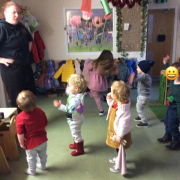 Babies and under-five children at Little Acorns Nursery are fortunate to have access to some fun, exciting and educational activities. These are optional but are very popular amongst the little ones. As well as the day-to-day activities and curriculum at the nursery, we also offer:
Babies and under-five children at Little Acorns Nursery are fortunate to have access to some fun, exciting and educational activities. These are optional but are very popular amongst the little ones. As well as the day-to-day activities and curriculum at the nursery, we also offer:
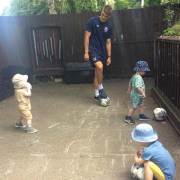 Preschool Drama Sessions, where children get to act, role-play and entertain each other in fun and beneficial ways.
Preschool Drama Sessions, where children get to act, role-play and entertain each other in fun and beneficial ways.
Baby Farm Animals Visit the Children
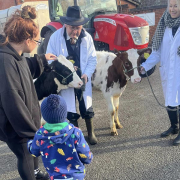 During January, the children were delighted when they had a surprise meeting with 2 wonderful twelve-week-old baby cows, called Louise and Jenny. Both calves and children were intrigued to meet each other and it was an opportunity that many children may otherwise not have had access to. Special thanks go to one of our lovely parents, who kindly facilitated this magical event with the loan of their beautiful calves.
During January, the children were delighted when they had a surprise meeting with 2 wonderful twelve-week-old baby cows, called Louise and Jenny. Both calves and children were intrigued to meet each other and it was an opportunity that many children may otherwise not have had access to. Special thanks go to one of our lovely parents, who kindly facilitated this magical event with the loan of their beautiful calves.
Weekly Visits to the Library
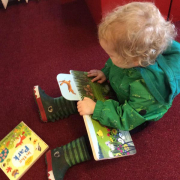 One of Little Acorns Nursery’s regular features is our weekly visits to the local library with the children. There, they are able to independently look through their favourite books as well as discovering new ones. Encouraging a love of reading is hugely important as it’ll lead to an understanding of a wider range of topics, it will improve language skills, enhance cognitive development and teach them so much about — well — potentially everything!
One of Little Acorns Nursery’s regular features is our weekly visits to the local library with the children. There, they are able to independently look through their favourite books as well as discovering new ones. Encouraging a love of reading is hugely important as it’ll lead to an understanding of a wider range of topics, it will improve language skills, enhance cognitive development and teach them so much about — well — potentially everything!
The Children Visit a Local Care Home
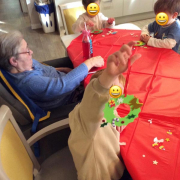 Children also enjoy their monthly visit to the local care home. It’s a great opportunity to meet and interact with the care home residents, who also really appreciate the youngsters’ company. Children and adults will bond as they talk, sing and even share in craft activities together. It’s a wonderful experience for all parties, teaching children many lessons about life and the importance of community, as well as enhancing communication and social skills. It also really brightens the day for the care home residents.
Children also enjoy their monthly visit to the local care home. It’s a great opportunity to meet and interact with the care home residents, who also really appreciate the youngsters’ company. Children and adults will bond as they talk, sing and even share in craft activities together. It’s a wonderful experience for all parties, teaching children many lessons about life and the importance of community, as well as enhancing communication and social skills. It also really brightens the day for the care home residents.
Gruffalo Crumble in Storytelling Week
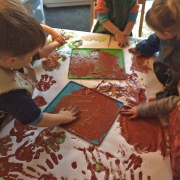 As January became early February, toddlers at Little Acorns Nursery had great fun celebrating Storytelling Week in creative ways. Running between 30th January to 5th February, the event saw children doing things like making their own ‘Gruffalo Crumble’ and ‘Gruffalo Woods’ as well as playing in our ‘Blue River’. The accompanying photo (right) illustrates one of the many creative story-themed activities that the children enjoyed.
As January became early February, toddlers at Little Acorns Nursery had great fun celebrating Storytelling Week in creative ways. Running between 30th January to 5th February, the event saw children doing things like making their own ‘Gruffalo Crumble’ and ‘Gruffalo Woods’ as well as playing in our ‘Blue River’. The accompanying photo (right) illustrates one of the many creative story-themed activities that the children enjoyed.
Vegetable & Fruit Growing at the Nursery
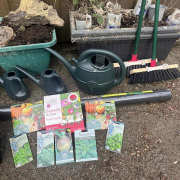 By mid-February, staff and children at the nursery had begun to prepare for another nature-themed activity – the growing of our own vegetables and fruit! So, various seed packets were procured and preparation for sowing the seeds and eventually growing our own produce commenced. The plan is to incorporate this activity into daily nursery life. Children will thereby start to understand the importance of nurturing living plants and the benefits of growing their own food. They’ll learn to be responsible, they’ll learn new things about nature, where food comes from and the importance of tending their own vegetable patch at the nursery. It’s a thoroughly worthwhile and fulfilling activity for them to enjoy too.
By mid-February, staff and children at the nursery had begun to prepare for another nature-themed activity – the growing of our own vegetables and fruit! So, various seed packets were procured and preparation for sowing the seeds and eventually growing our own produce commenced. The plan is to incorporate this activity into daily nursery life. Children will thereby start to understand the importance of nurturing living plants and the benefits of growing their own food. They’ll learn to be responsible, they’ll learn new things about nature, where food comes from and the importance of tending their own vegetable patch at the nursery. It’s a thoroughly worthwhile and fulfilling activity for them to enjoy too.
We were also delighted when one kind grandmother noticed our Facebook post about this food growing activity and offered us some spare strawberry plants. A huge thanks to her for those and we’re now looking forward to a crop of delicious strawberries too!
An Outstanding Childcare Service & Forest School in Clayton-le-Woods, Chorley

 If you have a child under five and are looking for the best childcare in Lancashire, explore the opportunity of sending your baby, toddler or preschooler to our outstanding nursery and pre-school. Please get in touch to register your child for a nursery or pre-school place, request a guided tour of the setting or simply to ask any questions. Our staff are always happy to answer queries and to show families around this wonderful childcare setting. Please choose a button to get started:
If you have a child under five and are looking for the best childcare in Lancashire, explore the opportunity of sending your baby, toddler or preschooler to our outstanding nursery and pre-school. Please get in touch to register your child for a nursery or pre-school place, request a guided tour of the setting or simply to ask any questions. Our staff are always happy to answer queries and to show families around this wonderful childcare setting. Please choose a button to get started:
Little Acorns Nursery offers award-winning childcare in Central Lancashire. We are a nursery and pre-school located in Clayton-le-Woods, Chorley, also being convenient for families in Clayton Brook, Clayton Green, Thorpe Green, Pippin Street, Buckshaw Village, Whittle-le-Woods, Farington, Bamber Bridge, Lostock Hall, Euxton, Leyland and Penwortham.

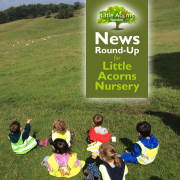
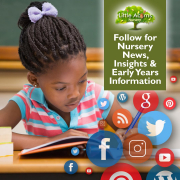
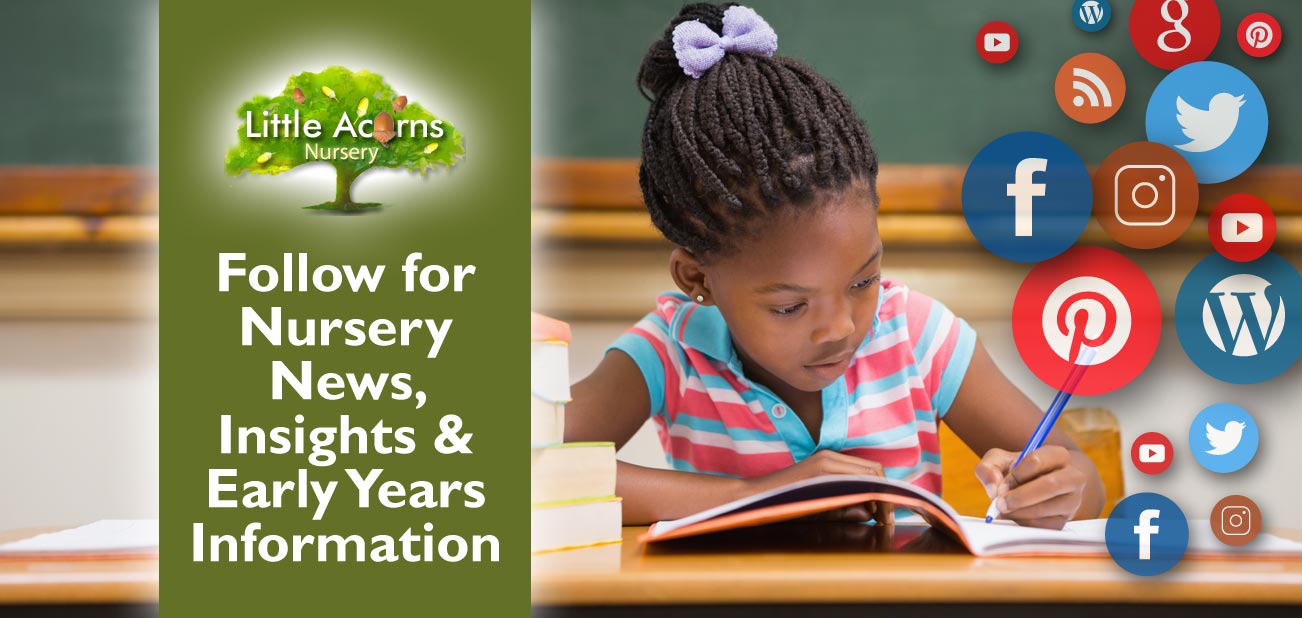
 Are you are a parent or carer of a child under five? If so, you could learn a lot about childcare, parenting and early years learning and development by following Little Acorns Nursery on social media. We’re active across multiple social channels including Twitter, Facebook, Pinterest and Instagram and share high quality content useful to parents of under-fives. That includes parents of children at Little Acorns although, actually, parents anywhere will find the content educational and useful. Our high quality content includes unusually informative ‘early years’ articles and information. For example, a whole range of guides, the findings from various studies, suggested activities for kids and overviews of things like childcare funding schemes with eligibility guidelines. Also, of course, the social media channels include posts relating to the exciting activities happening at the nursery in Clayton-le-Woods, Chorley.
Are you are a parent or carer of a child under five? If so, you could learn a lot about childcare, parenting and early years learning and development by following Little Acorns Nursery on social media. We’re active across multiple social channels including Twitter, Facebook, Pinterest and Instagram and share high quality content useful to parents of under-fives. That includes parents of children at Little Acorns although, actually, parents anywhere will find the content educational and useful. Our high quality content includes unusually informative ‘early years’ articles and information. For example, a whole range of guides, the findings from various studies, suggested activities for kids and overviews of things like childcare funding schemes with eligibility guidelines. Also, of course, the social media channels include posts relating to the exciting activities happening at the nursery in Clayton-le-Woods, Chorley. Follow Little Acorns Nursery on Twitter. There, you’ll see links to some great topics that relate to early years education. You’ll also see regular tweets and posts showing the exciting play and activities that children are taking part in at the nursery.
Follow Little Acorns Nursery on Twitter. There, you’ll see links to some great topics that relate to early years education. You’ll also see regular tweets and posts showing the exciting play and activities that children are taking part in at the nursery. On Facebook, we share our ‘bigger’ guides and articles from
On Facebook, we share our ‘bigger’ guides and articles from  We love Pinterest! Its simple, pictorial approach makes it easy to just pick out something that interests you and save it to your own Pinterest pin board, so you can simply save it or share with others. We’ve got lots of pin ‘boards’ on our Pinterest profile, where we’ve pinned images and links to articles that interest us as early years practitioners. We think you’ll like them too. Board topics include nature activities, sensory activities for under-5s, early years parenting, Forest School, outdoor play, preschool, nursery school activities and, of course, Little Acorns Nursery itself.
We love Pinterest! Its simple, pictorial approach makes it easy to just pick out something that interests you and save it to your own Pinterest pin board, so you can simply save it or share with others. We’ve got lots of pin ‘boards’ on our Pinterest profile, where we’ve pinned images and links to articles that interest us as early years practitioners. We think you’ll like them too. Board topics include nature activities, sensory activities for under-5s, early years parenting, Forest School, outdoor play, preschool, nursery school activities and, of course, Little Acorns Nursery itself. If you’re on Instagram, check out our photo gallery on our own Instagram profile. It shows images of the children playing and learning at the nursery as well as featured images that link to our highly interesting blog posts.
If you’re on Instagram, check out our photo gallery on our own Instagram profile. It shows images of the children playing and learning at the nursery as well as featured images that link to our highly interesting blog posts. Little Acorns Nursery is @LittleAcornsNurseryChorley on Google and;
Little Acorns Nursery is @LittleAcornsNurseryChorley on Google and; We’re active here on our Little Acorns blog too. Here, you’ll find larger articles that tend to cover the ‘bigger’ topics that parents and carers of children under five will find useful. These are well-researched, detailed and often very educational articles that will keep parents well-informed. For example, we cover topics like
We’re active here on our Little Acorns blog too. Here, you’ll find larger articles that tend to cover the ‘bigger’ topics that parents and carers of children under five will find useful. These are well-researched, detailed and often very educational articles that will keep parents well-informed. For example, we cover topics like 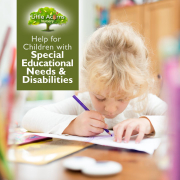
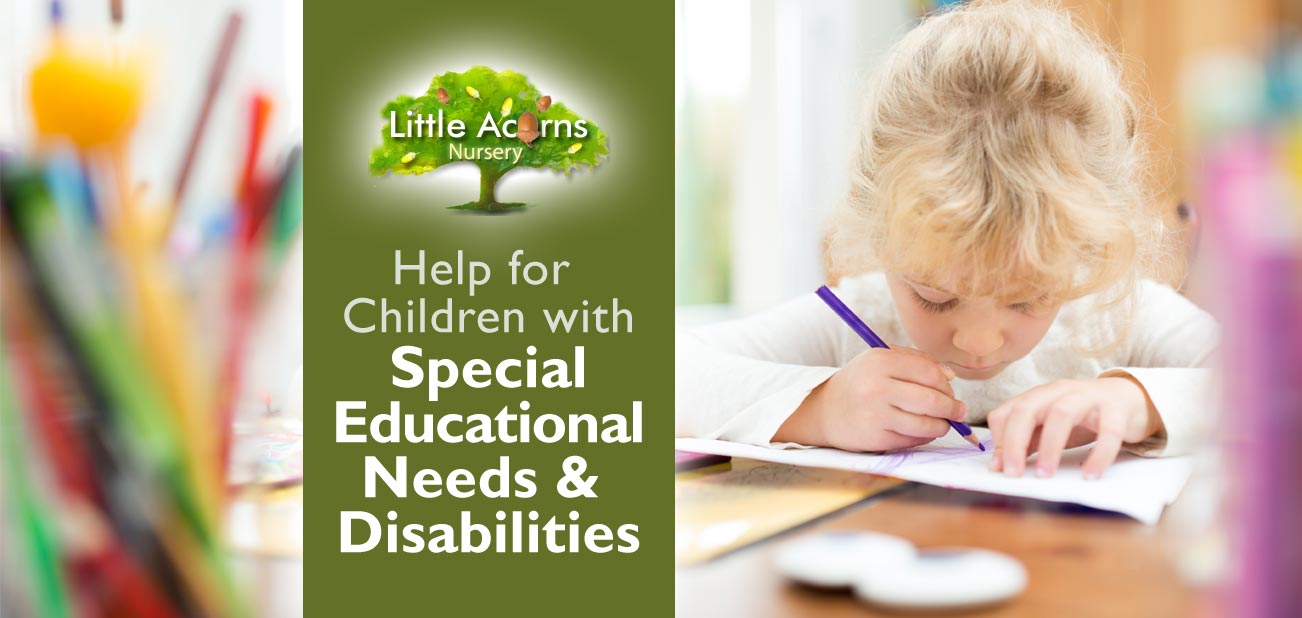
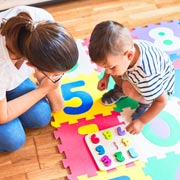 Today, we look at how early years childcare providers like Little Acorns Nursery can help children under five if they have special educational needs and disabilities. This is often referred to as ‘SEND’ or in longer forms like ‘SEN and disabilities’. Let’s explore the topic to get an overview of some of the help available.
Today, we look at how early years childcare providers like Little Acorns Nursery can help children under five if they have special educational needs and disabilities. This is often referred to as ‘SEND’ or in longer forms like ‘SEN and disabilities’. Let’s explore the topic to get an overview of some of the help available. Actually identifying an area of special need or disability is, of course, the first, crucial step in being able to help a child. If an area of special need is suspected, early years providers can work with parents and sometimes other professionals, for example health visitors, speech and language therapists, paediatricians and so on. Involving such professionals will help with any diagnosis.
Actually identifying an area of special need or disability is, of course, the first, crucial step in being able to help a child. If an area of special need is suspected, early years providers can work with parents and sometimes other professionals, for example health visitors, speech and language therapists, paediatricians and so on. Involving such professionals will help with any diagnosis. This is important. Early years providers can create an inclusive environment that welcomes and supports children of all abilities. Encouraging the inclusion of children in social groups and in the making of friends, for example, is of huge benefit to children’s well-being. Childcare settings can also provide special equipment or adapt the environment to make it more accessible for children with specific physical needs.
This is important. Early years providers can create an inclusive environment that welcomes and supports children of all abilities. Encouraging the inclusion of children in social groups and in the making of friends, for example, is of huge benefit to children’s well-being. Childcare settings can also provide special equipment or adapt the environment to make it more accessible for children with specific physical needs.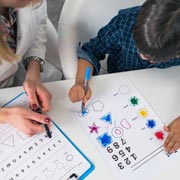 Early years providers like Little Acorns Nursery adapt the individual learning and development plans and activities to suit each child. In this way, they’re custom-designed to meet the needs of every child individually, including those with special needs. This is done as a matter of course as part of
Early years providers like Little Acorns Nursery adapt the individual learning and development plans and activities to suit each child. In this way, they’re custom-designed to meet the needs of every child individually, including those with special needs. This is done as a matter of course as part of 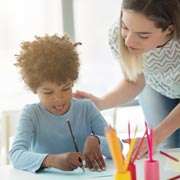 Later, each child will similarly have an ‘EYFS profile’ completed during the final term of reception year. However, as we’re focusing this article on children under five, we’ll not go into detail about that here.
Later, each child will similarly have an ‘EYFS profile’ completed during the final term of reception year. However, as we’re focusing this article on children under five, we’ll not go into detail about that here.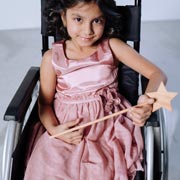 It may be useful for parents and carers to note that local authorities have a duty to publish what’s known as a ‘Local Offer’. This outlines the help available in the area for children with SEND, including how to access that support.
It may be useful for parents and carers to note that local authorities have a duty to publish what’s known as a ‘Local Offer’. This outlines the help available in the area for children with SEND, including how to access that support.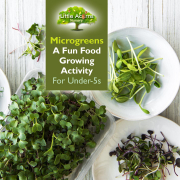
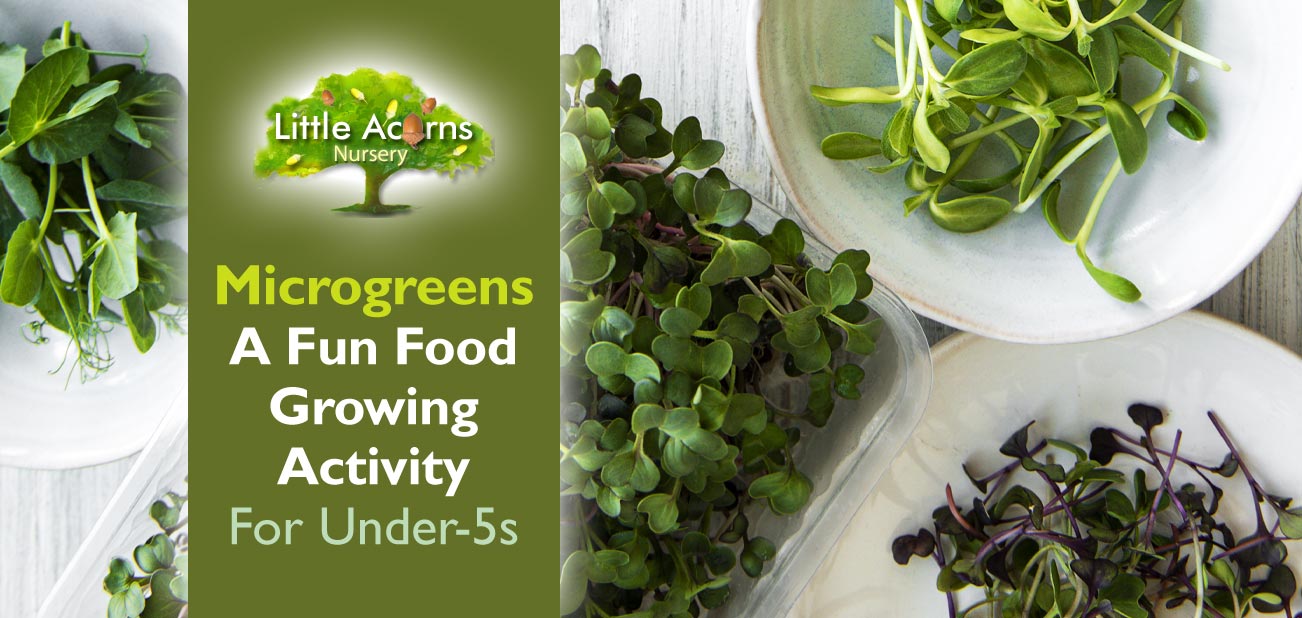
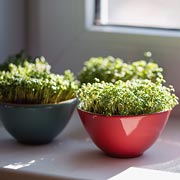 As promised in our recent
As promised in our recent  Microgreens, also known as micro leaves, are the young shoots of growing plants that are edible. Examples include the seedlings of herbs like basil and coriander, red cabbage micro leaves and the shoots from root vegetables like beetroot. When growing, the seedlings form a thick and rich ‘carpet’ of shoots that, when ready, can be snipped off en masse and used in meals as salads or garnishes. What’s more, they’re delicious, highly nutritious and make meals look amazing. The entire activity can also be accomplished indoors in any home. You do not need to have a garden because a well-lit windowsill or counter top will more than suffice.
Microgreens, also known as micro leaves, are the young shoots of growing plants that are edible. Examples include the seedlings of herbs like basil and coriander, red cabbage micro leaves and the shoots from root vegetables like beetroot. When growing, the seedlings form a thick and rich ‘carpet’ of shoots that, when ready, can be snipped off en masse and used in meals as salads or garnishes. What’s more, they’re delicious, highly nutritious and make meals look amazing. The entire activity can also be accomplished indoors in any home. You do not need to have a garden because a well-lit windowsill or counter top will more than suffice.
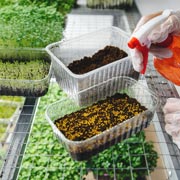 Microgreen seeds. These are available inexpensively online or at places like garden centres and even some supermarkets. You can buy microgreen mixed seeds or choose seeds for rocket, beetroot, spinach, red cabbage, fennel, broccoli, radish or mustard. Each has a distinctive look, when growing, and flavour, when eaten. Read the packets for more detail or just have fun and experiment!
Microgreen seeds. These are available inexpensively online or at places like garden centres and even some supermarkets. You can buy microgreen mixed seeds or choose seeds for rocket, beetroot, spinach, red cabbage, fennel, broccoli, radish or mustard. Each has a distinctive look, when growing, and flavour, when eaten. Read the packets for more detail or just have fun and experiment!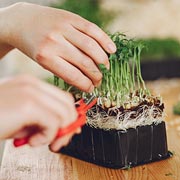 Different microgreen seeds grow at different rates but usually a dense carpet of growing shoots and tiny leaves will cover the trays or pots within one or two weeks. Generally speaking, when you can see small, immature leaves at the top of shoots about 1 to 1¼ inches tall, they are about ready to be harvested. For young children in particular, snipping them off is best done by parents, to avoid injury. The carpet of microgreens can be snipped off, using scissors, low down near where the shoots begin. It’s best to snip them off rather than to pull them up by the roots because then they have the chance to regrow and give you/your child a second crop later on. The microgreens can then be washed in a fine colander, under a cold tap, to remove any remnants of soil.
Different microgreen seeds grow at different rates but usually a dense carpet of growing shoots and tiny leaves will cover the trays or pots within one or two weeks. Generally speaking, when you can see small, immature leaves at the top of shoots about 1 to 1¼ inches tall, they are about ready to be harvested. For young children in particular, snipping them off is best done by parents, to avoid injury. The carpet of microgreens can be snipped off, using scissors, low down near where the shoots begin. It’s best to snip them off rather than to pull them up by the roots because then they have the chance to regrow and give you/your child a second crop later on. The microgreens can then be washed in a fine colander, under a cold tap, to remove any remnants of soil. Your child can then continue the fun by helping with meal preparation (with adult supervision for safety). Microgreens make wonderful garnishes, are lovely in salads and sandwiches and can also be added to things like soup, risotto, pasta, baked potatoes and burgers. They are incredibly attractive to look at, jazzing up any meal and also giving children extra nutrients to consume. They are also a great way to encourage children to try new tastes and food textures.
Your child can then continue the fun by helping with meal preparation (with adult supervision for safety). Microgreens make wonderful garnishes, are lovely in salads and sandwiches and can also be added to things like soup, risotto, pasta, baked potatoes and burgers. They are incredibly attractive to look at, jazzing up any meal and also giving children extra nutrients to consume. They are also a great way to encourage children to try new tastes and food textures.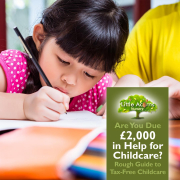
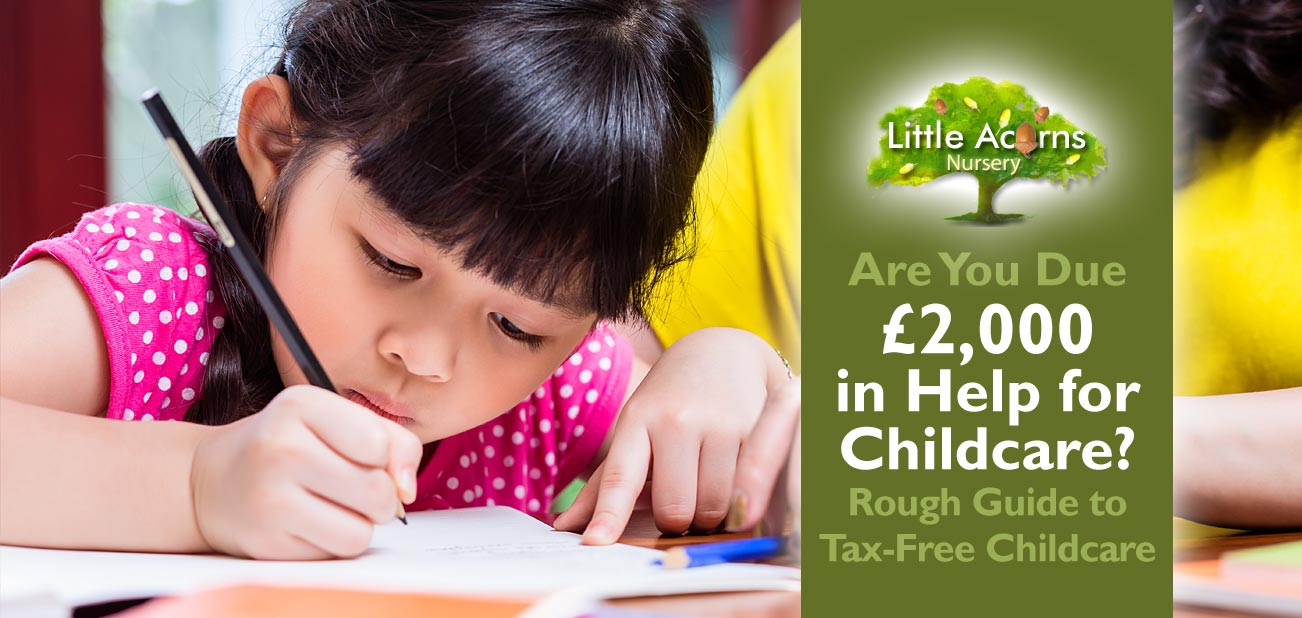
 Each year, around 1 million families miss out on thousands of pounds in free childcare funding — despite being eligible through the Government’s Tax-Free Childcare scheme. Are you one of them?
Each year, around 1 million families miss out on thousands of pounds in free childcare funding — despite being eligible through the Government’s Tax-Free Childcare scheme. Are you one of them?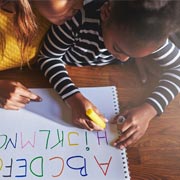 Families, including single parent families, are usually eligible for tax-free childcare scheme if they meet the following criteria:
Families, including single parent families, are usually eligible for tax-free childcare scheme if they meet the following criteria: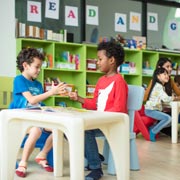 The Tax-Free Childcare contribution from the Government can only be used to pay for childcare provided by approved childcare providers that have signed up to the scheme. Such providers must be registered with either the Early Years Register, the Childcare Register or Ofsted in order to be approved. However, they can be nurseries, childminders, nannies, play schemes or even after school clubs. Little Acorns Nursery is, of course, such an approved childcare provider and would be happy to assist families to make the most of this very useful, free childcare funding opportunity.
The Tax-Free Childcare contribution from the Government can only be used to pay for childcare provided by approved childcare providers that have signed up to the scheme. Such providers must be registered with either the Early Years Register, the Childcare Register or Ofsted in order to be approved. However, they can be nurseries, childminders, nannies, play schemes or even after school clubs. Little Acorns Nursery is, of course, such an approved childcare provider and would be happy to assist families to make the most of this very useful, free childcare funding opportunity.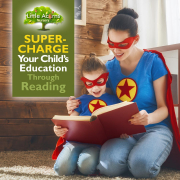
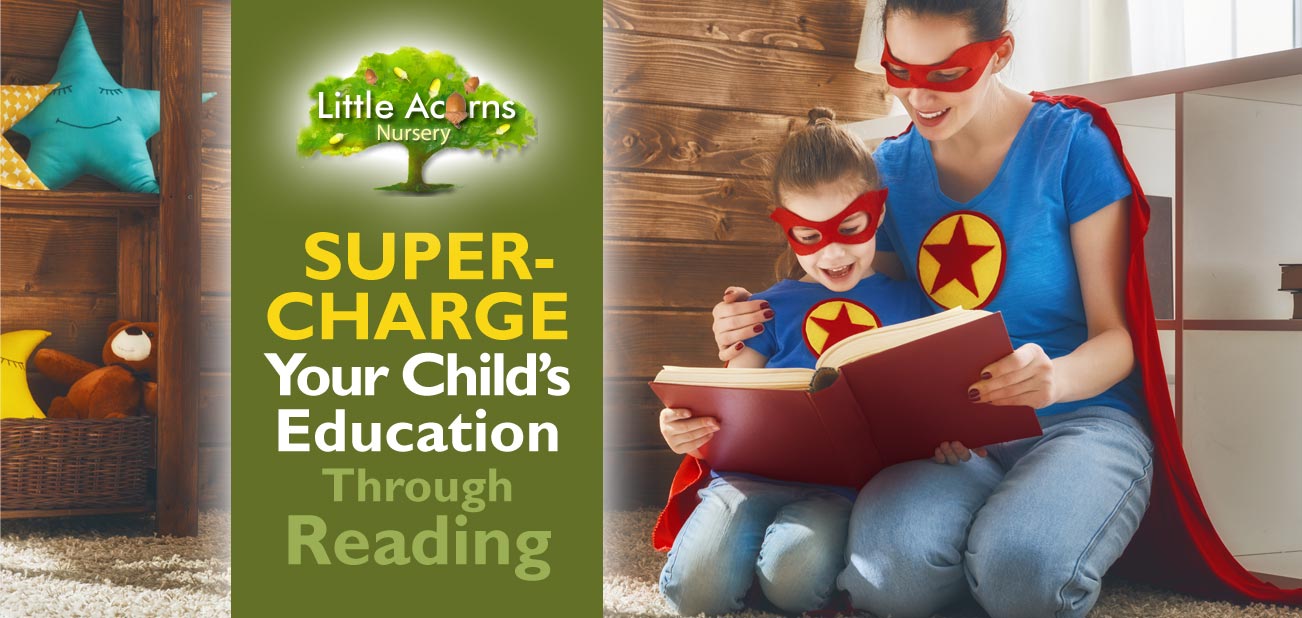
 Last year, we wrote a detailed post outlining
Last year, we wrote a detailed post outlining 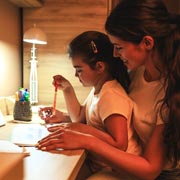 Interestingly, under-five children who came from disadvantaged backgrounds were shown to benefit even more than those who didn’t. For this reason, reading with parents/carers has been proposed as a possible way to close the performance deficit often seen with children from such backgrounds. It may well represent a perfect solution to even up the playing field.
Interestingly, under-five children who came from disadvantaged backgrounds were shown to benefit even more than those who didn’t. For this reason, reading with parents/carers has been proposed as a possible way to close the performance deficit often seen with children from such backgrounds. It may well represent a perfect solution to even up the playing field. Deeper bonds with parents/carers (after all, this is quality time spent together, one-to-one);
Deeper bonds with parents/carers (after all, this is quality time spent together, one-to-one);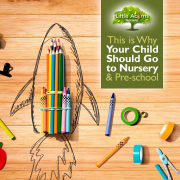
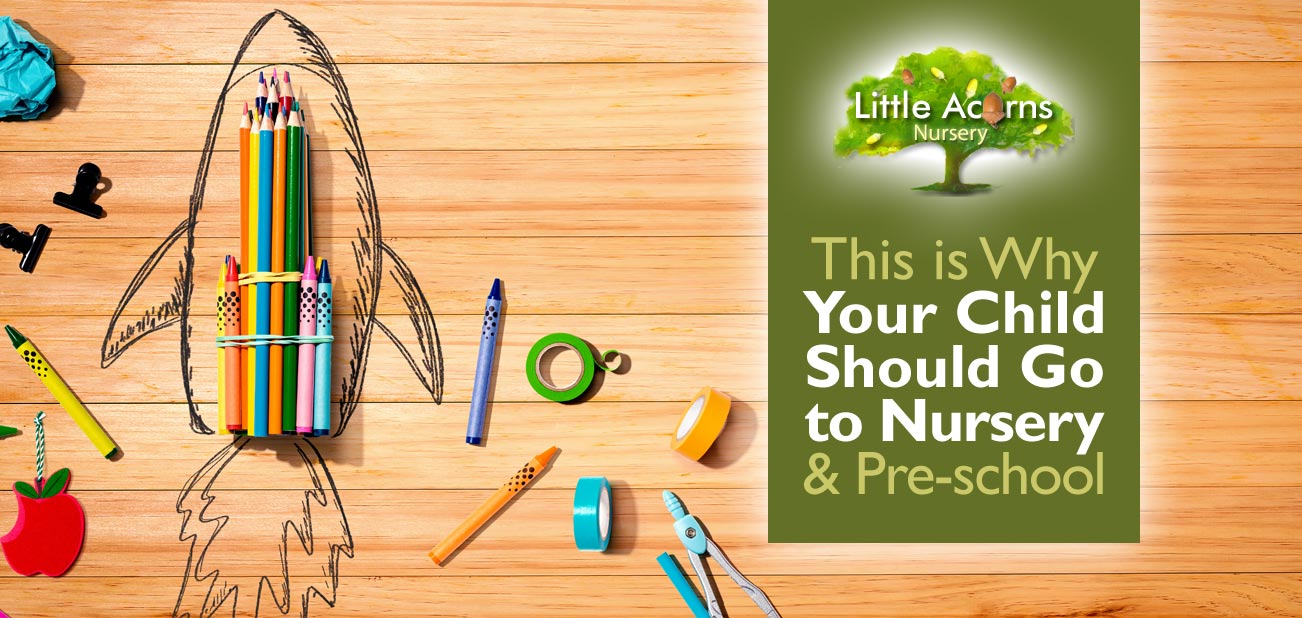
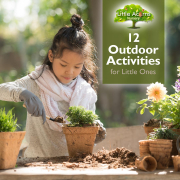
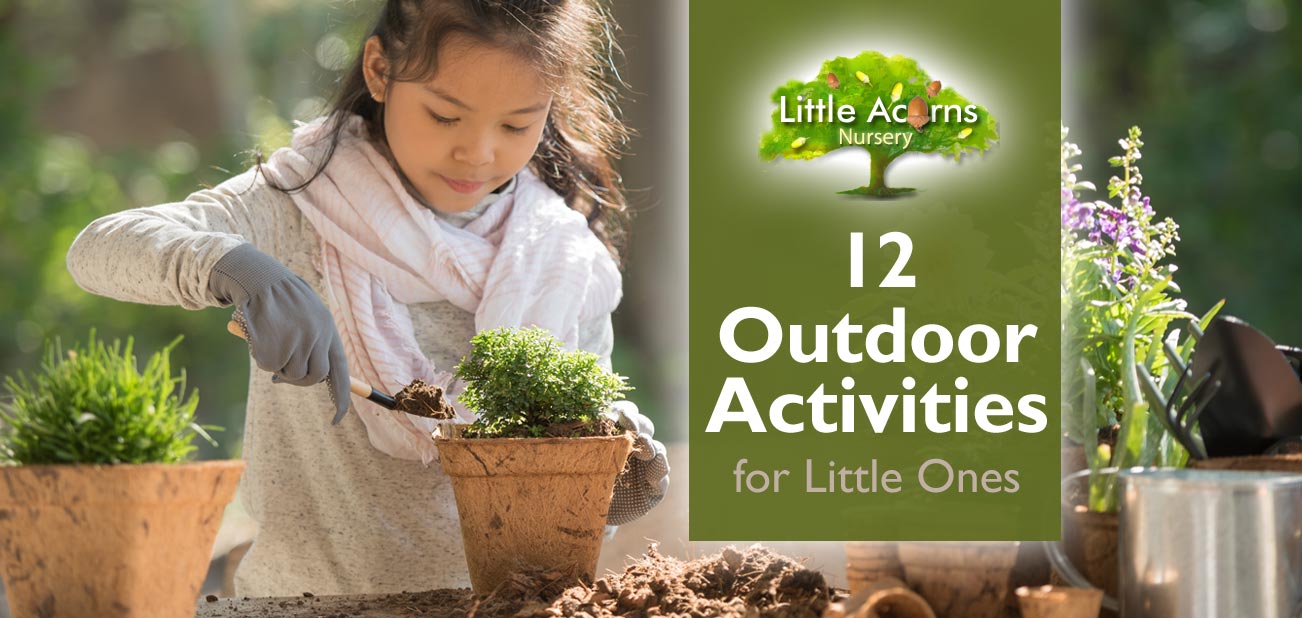
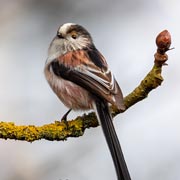 1. Bird spotting
1. Bird spotting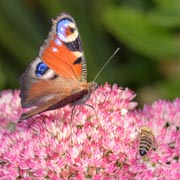 ee & Butterfly Spotting
ee & Butterfly Spotting 3. Search for Animal Tracks
3. Search for Animal Tracks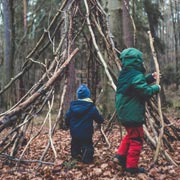 4. Make a Den
4. Make a Den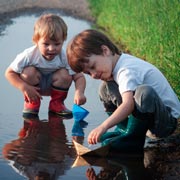 5. Float a Boat
5. Float a Boat 6. Go on a Ramble
6. Go on a Ramble 7. Get into Photography
7. Get into Photography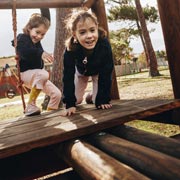 8. Obstacle Course
8. Obstacle Course 9. Have a Picnic
9. Have a Picnic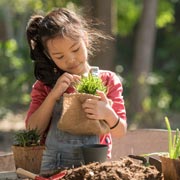
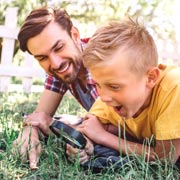 11. Hunt for Mini Beasts
11. Hunt for Mini Beasts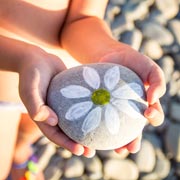 12. Get Creative with Rocks & Stones
12. Get Creative with Rocks & Stones Whether on the beach or in the garden, it’s surprising how creative children can be with stones and rocks! Stones can be painted with lovely patterns or images, perhaps combined with simple words or as part of a ‘stone story’. Bigger rocks can be piled one on top of the other to form sculptures — these look magical. Children will love these and other creative activities that they can take part in outdoors, with simple stones and rocks.
Whether on the beach or in the garden, it’s surprising how creative children can be with stones and rocks! Stones can be painted with lovely patterns or images, perhaps combined with simple words or as part of a ‘stone story’. Bigger rocks can be piled one on top of the other to form sculptures — these look magical. Children will love these and other creative activities that they can take part in outdoors, with simple stones and rocks.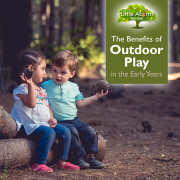
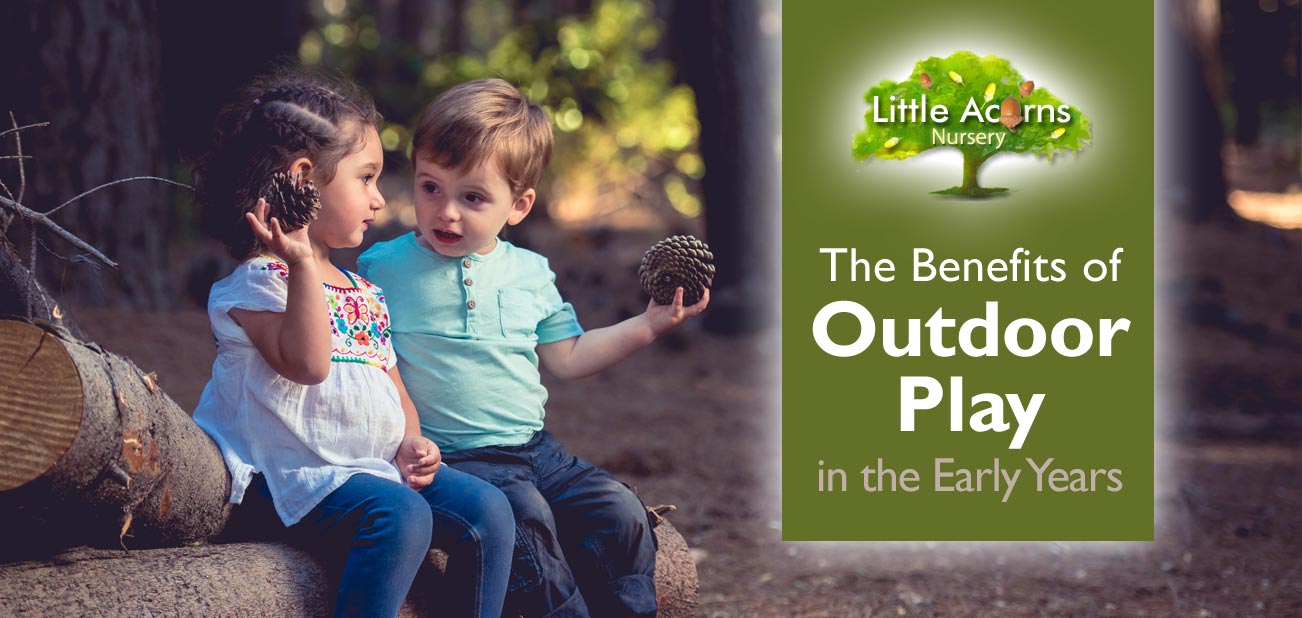
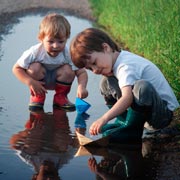 In today’s post, we take a look at the importance of outdoor play for children in their early years. Indeed, there are many benefits, as we’ll see …
In today’s post, we take a look at the importance of outdoor play for children in their early years. Indeed, there are many benefits, as we’ll see …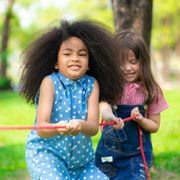 Playing outside is also a healthy release from things like TV, electronic screens and, potentially, from an otherwise more sedentary lifestyle. Away from the confines of the indoors, outdoor play allows children the freedom to move about more freely. Outside, they’ll learn to navigate spaces, obstacles and play equipment, all the time improving spatial awareness, coordination, balance and gross motor skills. These include running, jumping, climbing and so on. Their fitness levels will naturally improve too, as they build stamina, muscle and strength. This is all incredibly good for them.
Playing outside is also a healthy release from things like TV, electronic screens and, potentially, from an otherwise more sedentary lifestyle. Away from the confines of the indoors, outdoor play allows children the freedom to move about more freely. Outside, they’ll learn to navigate spaces, obstacles and play equipment, all the time improving spatial awareness, coordination, balance and gross motor skills. These include running, jumping, climbing and so on. Their fitness levels will naturally improve too, as they build stamina, muscle and strength. This is all incredibly good for them.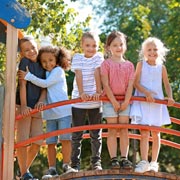 At Little Acorns, we understand the importance of outdoor play. Little ones, from the age of two have access to our outdoor gardens and play areas — all under close supervision, of course. We have invested heavily in a whole range of exciting, stimulating and educational outdoor facilities for the children to explore, play with and learn from. As they do, they will not only learn but they’ll also hone fine and gross motor skills, improve coordination and balance, improve physical fitness, enhance social skills and build friendships. They will also soon become better at recognising and balancing risk, they’ll become more independent as they move around freely. They’ll also learn from mistakes. Their self-confidence and self-esteem will also naturally grow. These are all incredibly important skills that will stand them in good stead as they gradually approach the age where they’ll leave us to move on to school.
At Little Acorns, we understand the importance of outdoor play. Little ones, from the age of two have access to our outdoor gardens and play areas — all under close supervision, of course. We have invested heavily in a whole range of exciting, stimulating and educational outdoor facilities for the children to explore, play with and learn from. As they do, they will not only learn but they’ll also hone fine and gross motor skills, improve coordination and balance, improve physical fitness, enhance social skills and build friendships. They will also soon become better at recognising and balancing risk, they’ll become more independent as they move around freely. They’ll also learn from mistakes. Their self-confidence and self-esteem will also naturally grow. These are all incredibly important skills that will stand them in good stead as they gradually approach the age where they’ll leave us to move on to school.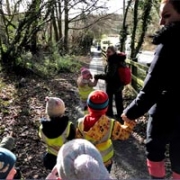 Taking outdoor experiences for little ones even further, Little Acorns regularly takes children on outings, including to local parks. More importantly, though, it was one of the first nurseries/pre-schools to introduce Forest School to Central Lancashire. This is the ultimate outdoor experience for under-fives and teaches them so much about the natural world — and also about themselves. As well as learning a huge amount about nature, flora, fauna, the seasons and about playing and learning in the Great Outdoors, Forest School helps them learn additional skills like problem-solving, working in teams, leadership, resilience, empathy, caring for the environment, personal responsibility and so much more. Learn more in
Taking outdoor experiences for little ones even further, Little Acorns regularly takes children on outings, including to local parks. More importantly, though, it was one of the first nurseries/pre-schools to introduce Forest School to Central Lancashire. This is the ultimate outdoor experience for under-fives and teaches them so much about the natural world — and also about themselves. As well as learning a huge amount about nature, flora, fauna, the seasons and about playing and learning in the Great Outdoors, Forest School helps them learn additional skills like problem-solving, working in teams, leadership, resilience, empathy, caring for the environment, personal responsibility and so much more. Learn more in 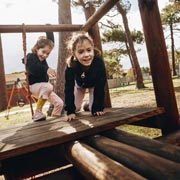 All these outdoor activities also support the early years curriculum. Outdoor playing and learning covers many of the areas outlined in the Early Years Foundation Stage (‘EYFS’) learning and development framework, which is prescribed for all childcare settings in England. Specifically, outdoor play helps children in at least four of the seven key areas of the EYFS including:
All these outdoor activities also support the early years curriculum. Outdoor playing and learning covers many of the areas outlined in the Early Years Foundation Stage (‘EYFS’) learning and development framework, which is prescribed for all childcare settings in England. Specifically, outdoor play helps children in at least four of the seven key areas of the EYFS including: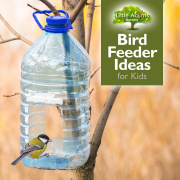
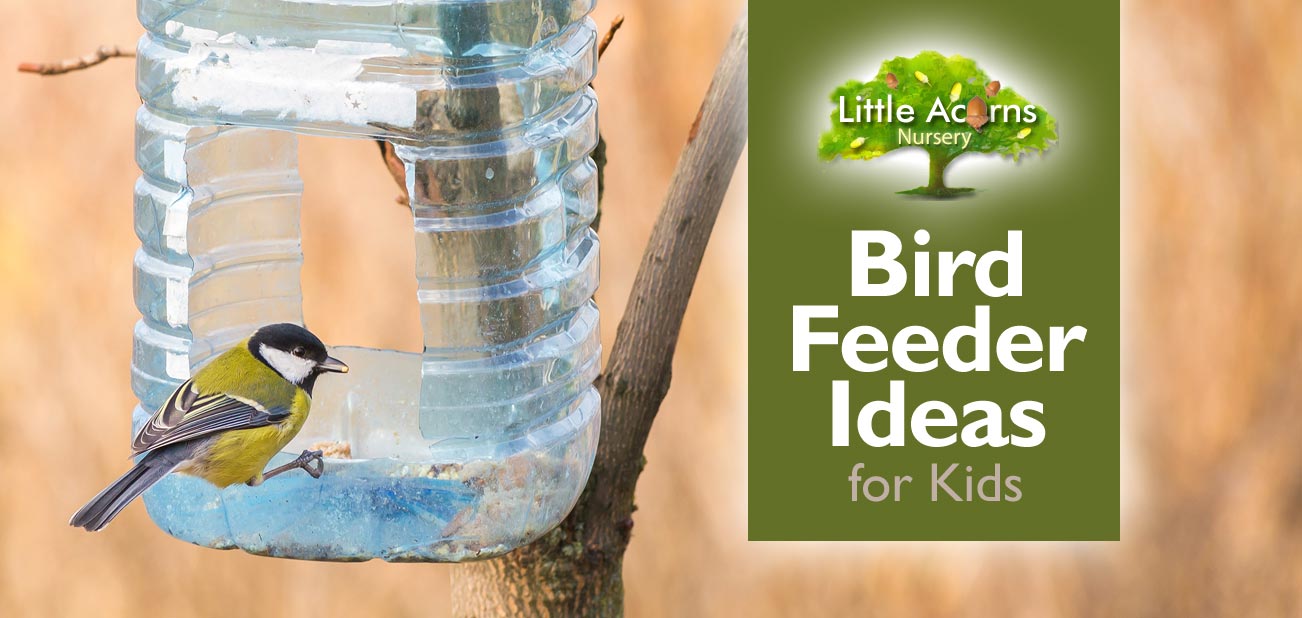
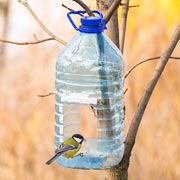 Making bird feeders
Making bird feeders 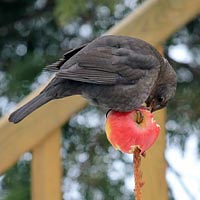
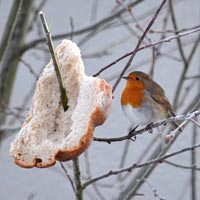
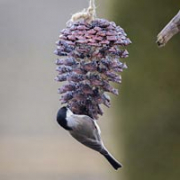
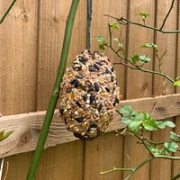 Seeded pine cone bird feeders
Seeded pine cone bird feeders  Water bottle bird feeders.
Water bottle bird feeders.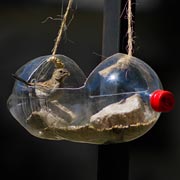 Then, they can be partly filled with bird seed, or perhaps grated Cheddar cheese. Alternatively you can see that some of the designs could be used for drinking water, for example the one shown immediately on the left or at the very top of this article. Another variation even has a plastic spoon pushed into it, forming a convenient perch for the birds to land on and to feed from (see right).
Then, they can be partly filled with bird seed, or perhaps grated Cheddar cheese. Alternatively you can see that some of the designs could be used for drinking water, for example the one shown immediately on the left or at the very top of this article. Another variation even has a plastic spoon pushed into it, forming a convenient perch for the birds to land on and to feed from (see right).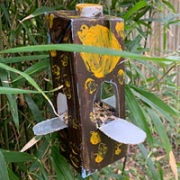 Carton bird feeders
Carton bird feeders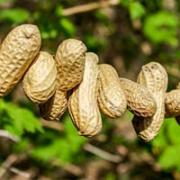 Monkey Nut Bird Feeders
Monkey Nut Bird Feeders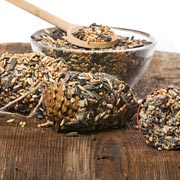 If using peanut butter in your home-made bird feeders, ensure it is fresh, has no salt or sugar added and is not ‘flavoured’. Smooth or crunchy peanut butter is great for bird-feeders, though, and you can even stick extra bird seed to it once it’s been spread on your feeder e.g. pine cone or apple. There are also some peanut butter brands made specifically for wild birds, by the way.
If using peanut butter in your home-made bird feeders, ensure it is fresh, has no salt or sugar added and is not ‘flavoured’. Smooth or crunchy peanut butter is great for bird-feeders, though, and you can even stick extra bird seed to it once it’s been spread on your feeder e.g. pine cone or apple. There are also some peanut butter brands made specifically for wild birds, by the way. Why Nature is So Important for Children
Why Nature is So Important for Children